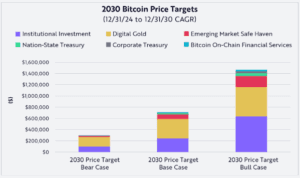
Google reduces the quantum computing requirement to breach Bitcoin security by 95% using technology expected in ten years.
Concerns regarding the cryptographic security of Bitcoin have resurfaced following comments from a Google researcher who indicated that quantum computing advancements might enable the compromise of its encryption sooner than previously believed.
Craig Gidney, a prominent quantum computing expert at Google, revealed recent findings that show a substantial reduction in the hardware requirements necessary to breach 2048-bit RSA encryption, a critical mathematical component closely related to Bitcoin’s security.
Gidney highlighted a shift in his earlier estimates of needing 20 million noisy qubits to now requiring fewer than one million, marking a significant advancement in quantum computing capabilities.
While this decrease in the computational burden signifies notable progress, breaking the encryption could still take days rather than mere hours.
This advancement has been attributed to improvements in quantum algorithms and better error correction methods that allow for more efficient encoding of logical qubits, leading to a reduction in the number of physical qubits needed.
Bitcoin’s Vulnerabilities to Quantum Computing
These findings have emerged amid rising concerns regarding the rapid development of quantum computing technology. Recently, Google unveiled its Willow chip, a next-generation quantum processor that many experts believe brings real threats to digital security closer to reality.
In light of these developments, several major financial institutions are revising their risk assessments. For instance, BlackRock recently identified quantum computing as a significant risk factor for its Bitcoin ETF, IBIT.
The firm noted:
“Should quantum computing technology advance significantly compared to current capabilities, it could jeopardize the effectiveness of many cryptographic algorithms utilized in the global information technology infrastructure, including those pertinent to digital assets like Bitcoin.”
This shift indicates a growing recognition that technological innovations may undermine Bitcoin’s cryptographic foundation sooner than expected.
Nonetheless, some experts maintain that the cryptocurrency sector has time to prepare for these potential risks.
Current demonstrations of logical qubits vary in scale, with a maximum of around a dozen (for instance, Quantinuum’s 12 logical qubits). The one million qubit reference pertains to physical (noisy) qubits rather than logical ones. This means there’s still a considerable gap in quantum capacity, requiring significant advancements in error rates.
Even the target for physical qubits is likely 8 to 12 years away, while a true machine capable of one million logical qubits could take decades to develop.
| Leading Platform (Universal Gate-Based) | Physical Qubits | Notes |
|---|---|---|
| IBM “Condor” (Superconducting) | 1,121 | First chip with over 1,000 qubits, still has noise issues |
| Atom Computing (Neutral Atoms) | >1,000 | Prototype launched in March 2025 |
| Google “Willow” (Superconducting) | 105 | Achieved low error rates and crossed quantum error correction “threshold” |
| Quantinuum H2 (Trapped Ions) | 56 | High-fidelity ion trap; used by Microsoft to produce 12 logical qubits |
| D-Wave Advantage 2 (Annealer) | 1,200 | Not a universal machine and cannot execute Shor’s algorithm |
In the meantime, Bitcoin analyst Fred Krueger is of the opinion that a “quantum-resistant” version of Bitcoin is on the horizon.
He foresees a network fork resulting in a fortified version of Bitcoin diverging from its legacy counterpart, akin to Ethereum’s split into ETH and Ethereum Classic.
He remarked:
“Ultimately, there will be a fork. ‘Quantum Resistant Bitcoin (QRB)’ and ‘Bitcoin Classic.’ The substantial investments will favor QRB while some may resist. Bitcoin Classic (BTC) could become the new Ethereum Classic.”
However, if Bitcoin’s vulnerabilities manifest in eight years, there may be limited time for the network to implement any quantum-resistant upgrades.


















Post Comment